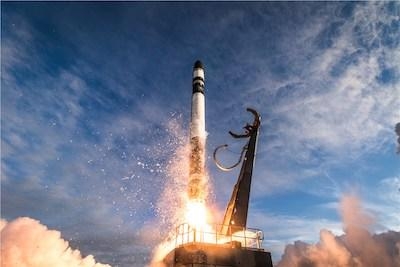First Dedicated Launch With U.S. Partner Rocket Lab
A series of new CubeSats now are in space, conducting a variety of scientific investigations and technology demonstrations, following launch Sunday of Rocket Lab’s first mission for NASA under a Venture Class Launch Services (VCLS) contract.

An Electron rocket lifted off at 1:33 a.m. EST (7:33 p.m. NZDT) from the company’s launch complex on the Mahia Peninsula in New Zealand, marking the first time CubeSats have launched for NASA on a rocket designed specifically for small payloads.
“With the VCLS effort, NASA has successfully advanced the commercial launch service choices for smaller payloads, providing viable dedicated small launch options as an alternative to the rideshare approach,” said Jim Norman, director of Launch Services at NASA Headquarters in Washington. “This first mission is opening the door for future launch options.”
At the time of the VCLS award in 2015, launch opportunities for small satellites and science missions were limited to ridesharing - flying only when space was available on other missions. Managed by NASA’s Launch Services Program at Kennedy Space Center in Florida, VCLS awards are designed to foster a commercial market where SmallSats and CubeSats could be placed in orbits to get the best science return.
This mission includes 10 Educational Launch of Nanosatellites (ELaNa)-19 payloads, selected by NASA’s CubeSat Launch Initiative. The initiative is designed to enhance technology development and student involvement. These payloads will provide information and demonstrations in the following areas:
- CubeSat Compact Radiation Belt Explorer (CeREs) — High energy particle measurement in Earth’s radiation belt
- Simulation-to-Flight 1 (STF-1) — Software condensing to support CubeSat implementations
- Advanced Electrical Bus (ALBus) — Advances in solar arrays and high capacity batteries
- CubeSat Handling Of Multisystem Precision Time Transfer (CHOMPTT) — Navigation plans for exo-planetary implementation
- CubeSail — Deployment and control of a solar sail blade
- NMTSat — Magnetic field, high altitude plasma density
- Rsat — Manipulation of robotic arms
- Ionospheric Scintillation Explorer (ISX) — Plasma fluctuations in the upper atmosphere
- Shields-1 — Radiation shielding
- DaVinci — High School to Grade School STEM education
“Low cost launch services to enable expanded science from smaller satellites are now a reality. NASA's Earth Venture program and indeed our entire integrated, Earth-observing mission portfolio will benefit greatly from the ability to launch small satellites into optimal orbits, when and where we want them,” said Dr. Michael Freilich, Director of Earth Science at NASA Headquarters in Washington. “Our partnership with LSP on the VCLS effort is helping both NASA and the commercial launch sector.”
CubeSats are small satellites built in standard units of 10 cm x 10 cm x 10 cm, or in configurations of two, three or six units. These small satellites play a valuable role in the agency’s exploration, technology, educational, and science investigations, including planetary exploration, Earth observation, and fundamental Earth and space science. They are a cornerstone in the development of cutting-edge NASA technologies like laser communications, satellite-to-satellite communications and autonomous movement.
NASA will continue to offer CubeSats an opportunity to hitch a ride on primary missions in order to provide opportunities to accomplish mission objectives, and expects to announce the next round of CubeSats for future launches in February 2019.
(Image provided with NASA news release)
 Airborne-Flight Training 05.09.24: ERAU at AIAA, LIFT Diamond Buy, Epic A&P
Airborne-Flight Training 05.09.24: ERAU at AIAA, LIFT Diamond Buy, Epic A&P ANN's Daily Aero-Term (05.07.24): Hazardous Weather Information
ANN's Daily Aero-Term (05.07.24): Hazardous Weather Information Aero-News: Quote of the Day (05.07.24)
Aero-News: Quote of the Day (05.07.24) NTSB Final Report: Cessna 150
NTSB Final Report: Cessna 150 Aero-News: Quote of the Day (05.08.24)
Aero-News: Quote of the Day (05.08.24)



